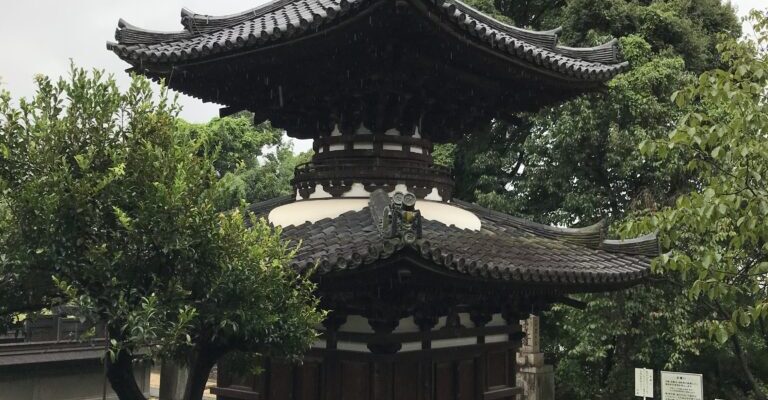京都市最古といわれる多宝塔
最近買った本に「イラストで学ぶ京都の文化財」というのがあります。その最初の方に、京都市内に現存する多宝塔として最古に属すると紹介されていたのが、宝塔寺の多宝塔です。お寺の名前が、この塔を大切にしていることを表しています。
京阪電車で龍谷大学前深草駅から歩いて10分程度のところになります。以前、仕事で龍谷大学を訪れた際には、宝塔寺の存在を知りませんでした。住宅街の中のなだらかにカーブした道沿いに歩いていると、四脚門が左側に見えてきます。禁門の変の時には、この門前で長州藩と大垣藩が激しく戦ったそうです。
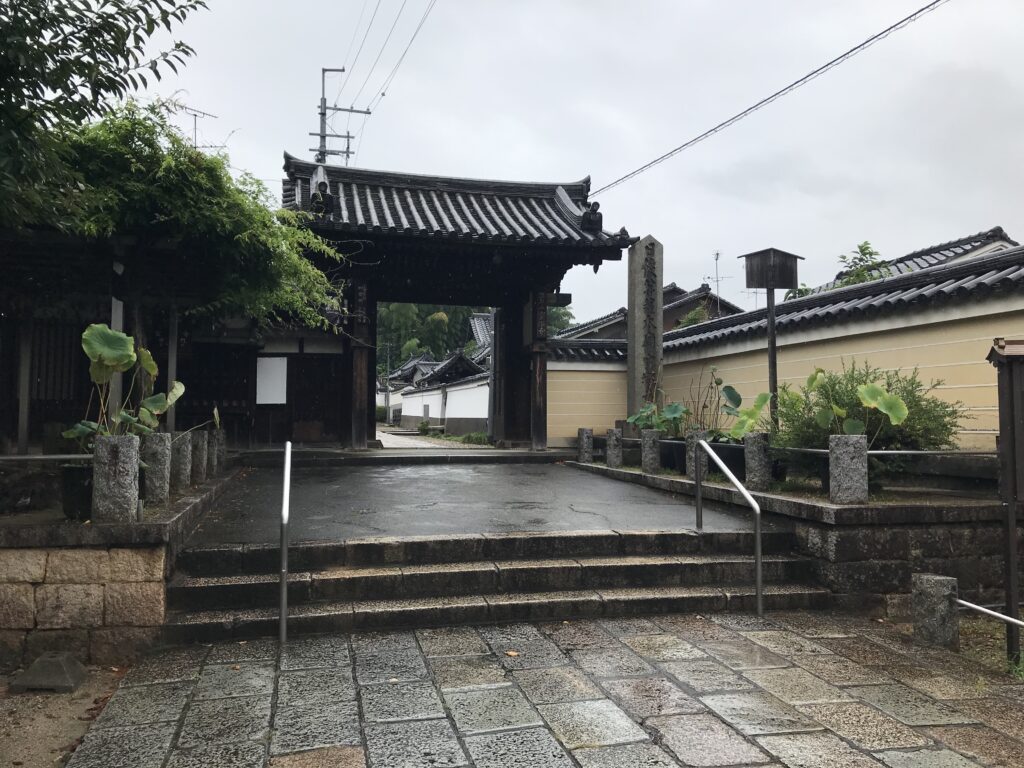
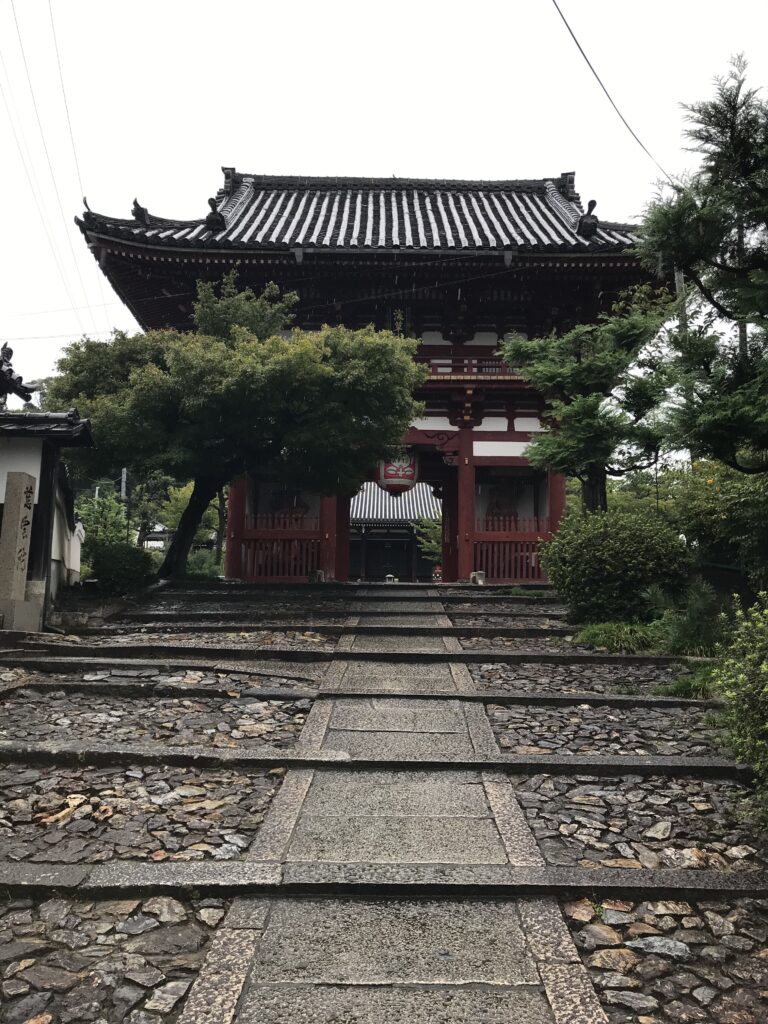
真っ赤な仁王さんがお出迎え
訪問した日は雨だったので、夏の暑い日差しを避けることができました。仁王門では真っ赤な仁王さん達が迎えてくれました。江戸時代の作品ですが、色は昭和に塗りなおしたそうで、鮮やかな赤でした。
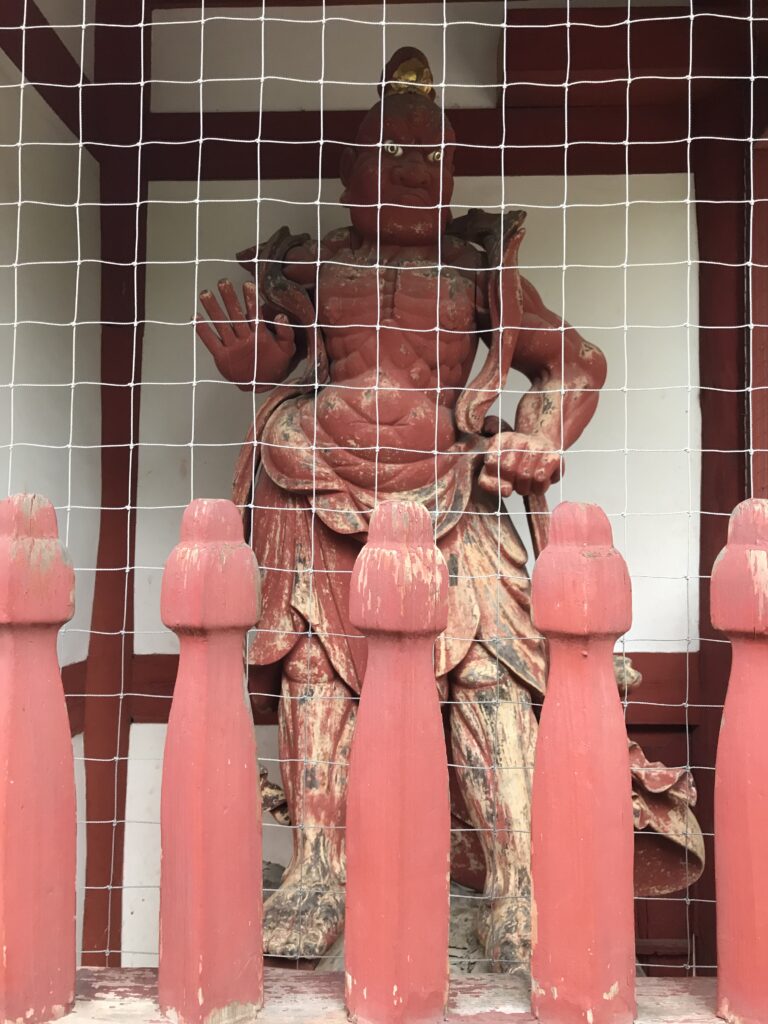
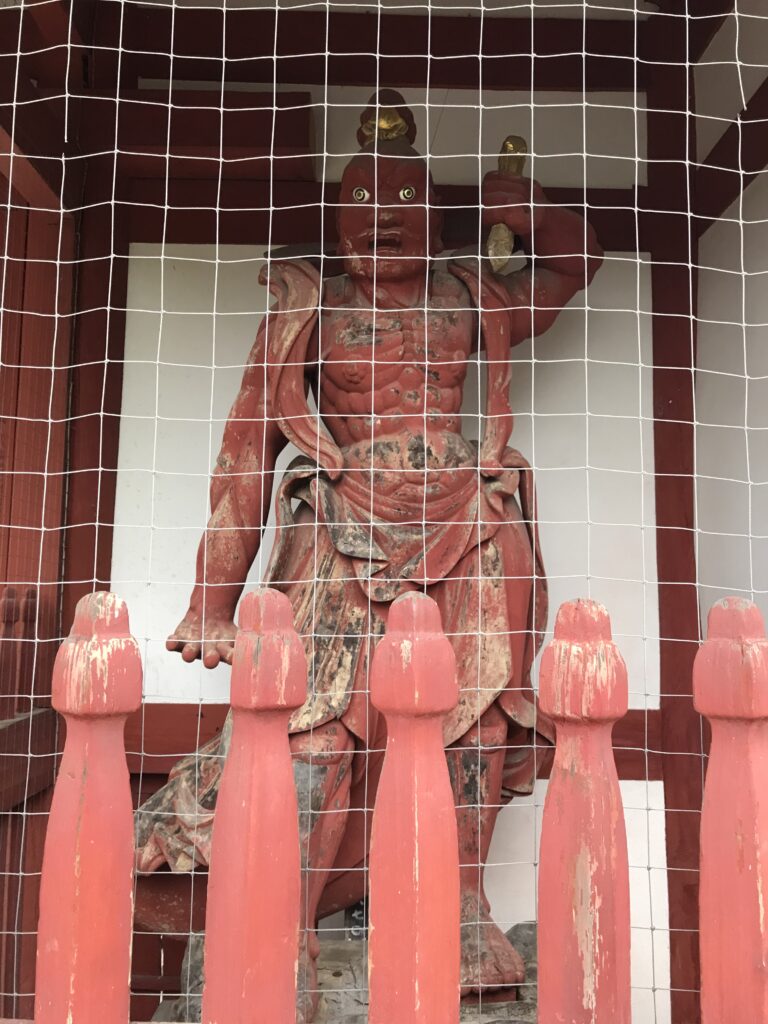
このお寺の四脚門、本堂、多宝塔が重要文化財です。本堂は開いていなかったので、ガラス越しのご本尊の釈迦像を見ました。中が暗かったので、ぼんやりとしか見えませんでしたが、やさしい顔を拝むことができました。
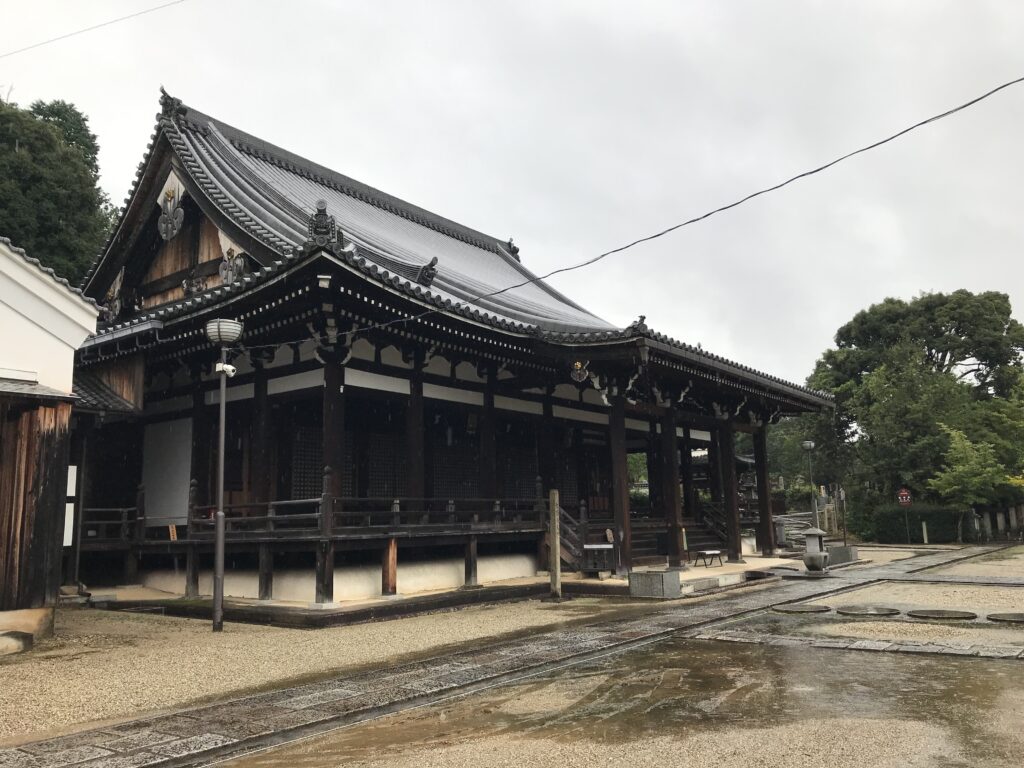
雨に濡れて一層落ち着いた雰囲気の多宝塔
本堂でお参りした後、その横の墓地の角にある多宝塔を見に行きました。室町時代の1438年に建てられたのがわかる墨書きがあるそうです。塗装の色は元々ないのか、色あせてしまったのか不明ですが、木の色がそのままなので、落ち着いた感じがします。お参りしていたおかげでしょうか、雨に濡れた石畳の上でひっくり返りそうになりましたが、無事に姿勢を立て直して、事なきを得ました。(完)
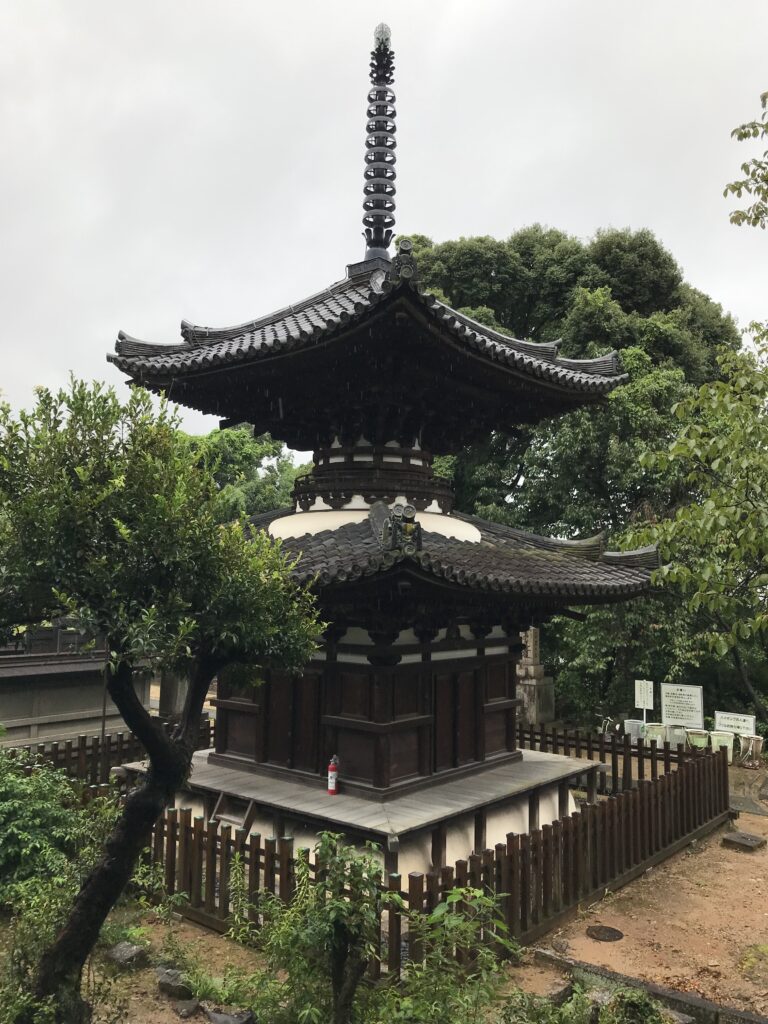
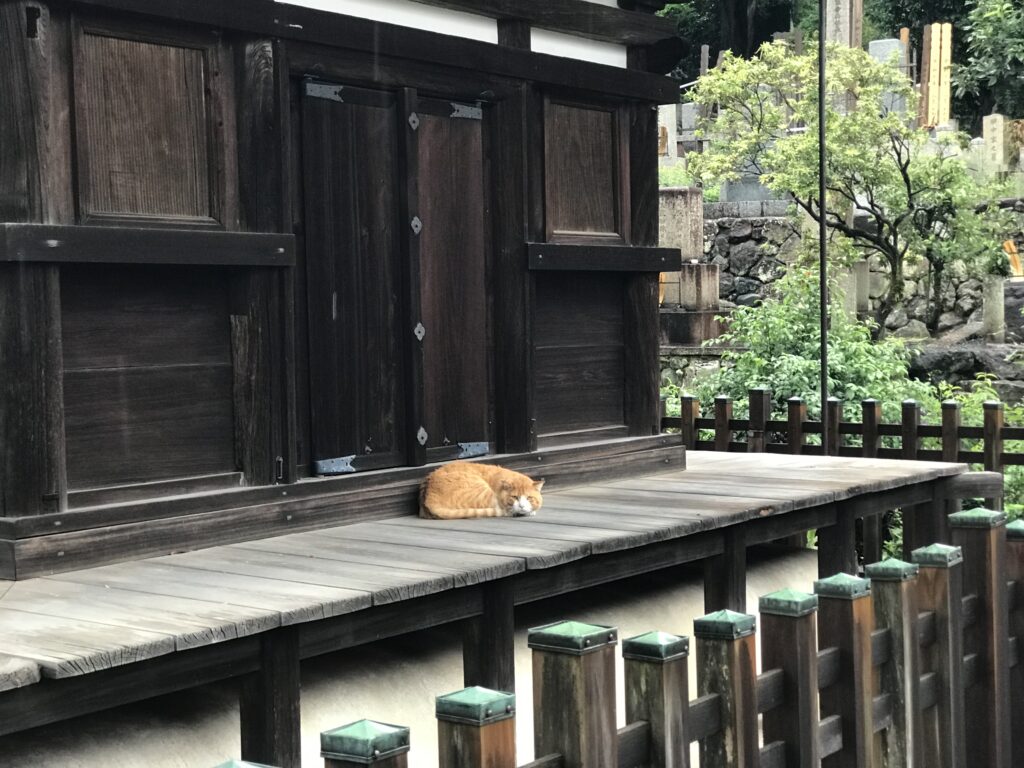
宝塔寺の御朱印
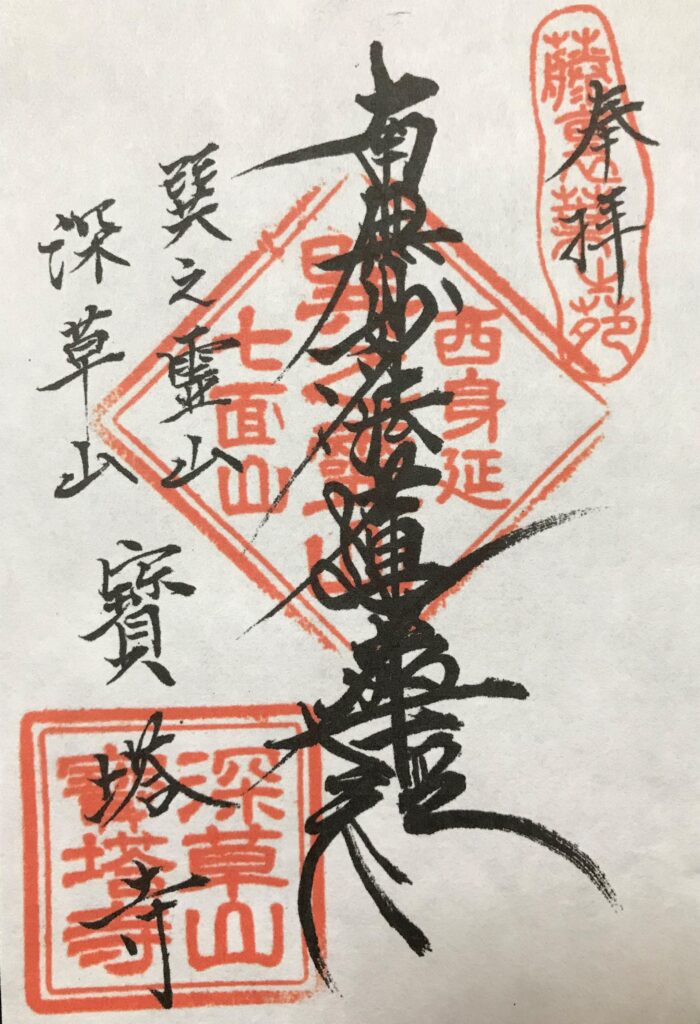
宝塔寺の多宝塔が紹介されている本
「イラストで学ぶ京都の文化財」宝塔寺の多宝塔が紹介されています。
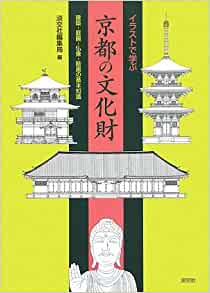
イラストで学ぶ京都の文化財 建築・庭園・仏像・絵画の基本知識 [ 淡交社 ]
価格:1,980円
(2021/9/4 10:19時点)
感想(0件)
Hoto-ji Temple
I recently bought a book titled “Illustrations of Kyoto’s Cultural Properties”. In the first part of the book, the pagoda of Hoto-ji Temple was introduced as belonging to the oldest existing pagoda in Kyoto City. The name of the temple indicates the importance attached to this pagoda.
It is about a 10-minute walk from Ryukoku Daigaku-mae Fukakusa Station on the Keihan Railway. When I visited Ryukoku University on business before, I was unaware of the existence of Hoto-ji. Walking along a gently curving road in a residential area, you will see the Shikyakumon gate on the left. It is said that the Choshu and Ogaki clans fought fiercely in front of this gate during the Forbidden Gate Incident.
It was raining on the day I visited, so I was able to avoid the hot summer sun. At the Niomon gate, I was welcomed by bright red Niou-san and others. Although they were made in the Edo period, the color was said to have been repainted in the Showa period (1926-1989) and was a vivid red.
The temple’s Shikyakumon gate, main hall, and pagoda are important cultural properties. The main hall was not open, so I saw the main statue of Buddha through the glass. It was dark inside, so I could only see it dimly, but I was able to see its gentle face.
After praying in the main hall, I went to see the pagoda on the corner of the cemetery next to it. There is an ink inscription on the pagoda that shows it was built in 1438 during the Muromachi period (1336-1573). It is unclear if the paint color is not original or if it has faded, but the color of the wood is intact, giving it a serene feeling. Perhaps it was because I was visiting the temple, but I almost fell over on the rain-soaked cobblestones, but I was able to regain my posture and escaped unharmed. (End)
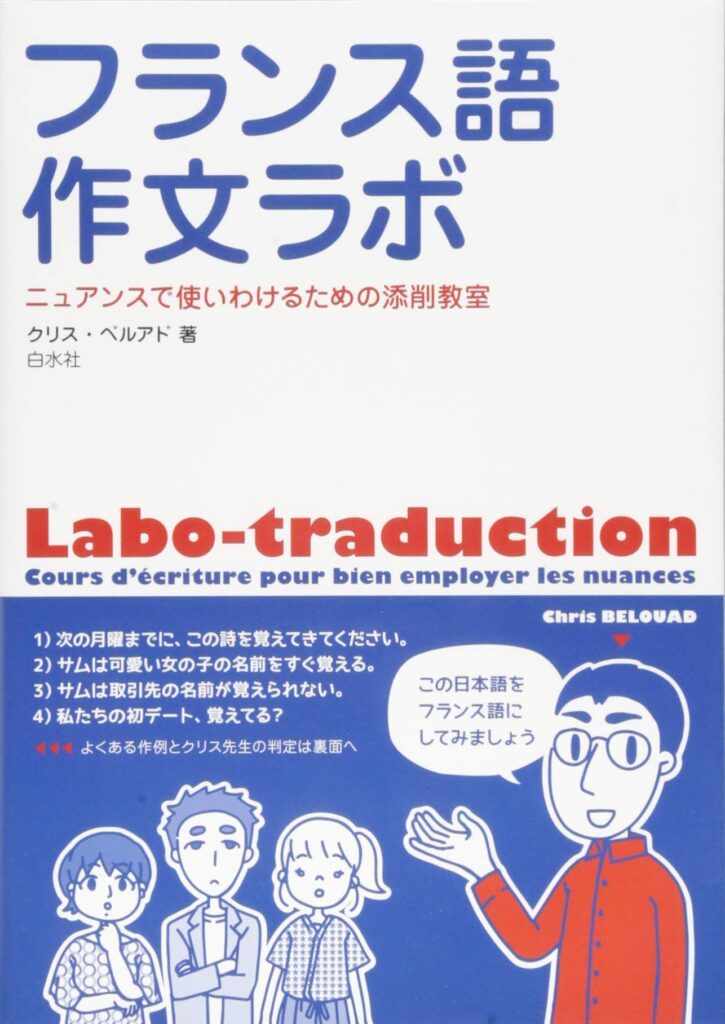
新品価格
¥2,420から
(2022/5/6 23:06時点)
Temple Hoto-ji
J’ai récemment acheté un livre intitulé “Illustrations des biens culturels de Kyoto”. Dans la première partie du livre, la pagode du temple Hoto-ji est présentée comme appartenant à la plus ancienne pagode existante dans la ville de Kyoto. Le nom du temple indique l’importance attachée à cette pagode.
Il se trouve à environ 10 minutes de marche de la station Ryukoku Daigaku-mae Fukakusa du chemin de fer Keihan. Lorsque j’ai visité l’université Ryukoku pour affaires auparavant, je ne connaissais pas l’existence du Hoto-ji. En marchant le long d’une route légèrement sinueuse dans un quartier résidentiel, vous verrez la porte Shikyakumon sur la gauche. On raconte que les clans Choshu et Ogaki se sont violemment battus devant cette porte lors de l’incident de la Porte interdite.
Il pleuvait le jour de ma visite, j’ai donc pu éviter le chaud soleil d’été. À la porte Niomon, j’ai été accueilli par Niou-san et d’autres personnes de couleur rouge vif. Bien qu’ils aient été fabriqués pendant la période Edo, on dit que la couleur a été repeinte pendant la période Showa (1926-1989) et qu’elle était d’un rouge vif.
La porte Shikyakumon, le hall principal et la pagode du temple sont des biens culturels importants. Le hall principal n’était pas ouvert, j’ai donc vu la statue principale de Bouddha à travers la vitre. Il faisait sombre à l’intérieur, je ne pouvais donc que l’apercevoir faiblement, mais j’ai pu voir son doux visage.
Après avoir prié dans la salle principale, je suis allé voir la pagode au coin du cimetière à côté. Il y a une inscription à l’encre sur la pagode qui montre qu’elle a été construite en 1438 pendant la période Muromachi (1336-1573). On ne sait pas si la couleur de la peinture n’est pas d’origine ou si elle s’est estompée, mais la couleur du bois est intacte, ce qui lui donne une impression de sérénité. Peut-être était-ce parce que je visitais le temple, mais j’ai failli tomber sur les pavés trempés par la pluie, mais j’ai pu retrouver ma posture et m’en sortir indemne. (Fin)
